Dr. Phil Zeltzman is a traveling, board-certified surgeon in Eastern Pennsylvania and Western New Jersey. His website is www.DrPhilZeltzman.com.
“I just can’t believe we couldn’t tell Missy had cancer,” said my teary-eyed client. “There were no warning signs,” she added, as we discussed the biopsy results after removing a cancerous mass in the intestine.
It is notoriously difficult to detect cancer early in pets. Let’s get rid of a common myth: in many cases, cancer cannot be detected on blood work.
However, there are 10 things you can look for, according to the American Veterinary Medical Association and the Veterinary Cancer Society. Even if the condition turns out not to be cancer, these signs may be able to detect another medical condition that needs veterinary attention. Also, it is critical to remember that a pet can be very sick “inside," without showing any of the signs “outside” (as in Missy’s case), which is why I recommend regular, veterinary checkups, ideally every 6 months. Early detection is key when dealing with cancer, so learn to spot the signs I discuss here:
1. Abnormal swellings that persist or continue to grow
The most obvious sign is a mass (or bump, or lump) that keeps growing under the skin. Any surgeon will recommend that you don’t just “watch it,” but have it removed AND biopsied. If the mass turns out to be benign, that’s great. If it is malignant or cancerous, then at least we know and can discuss what to do next.
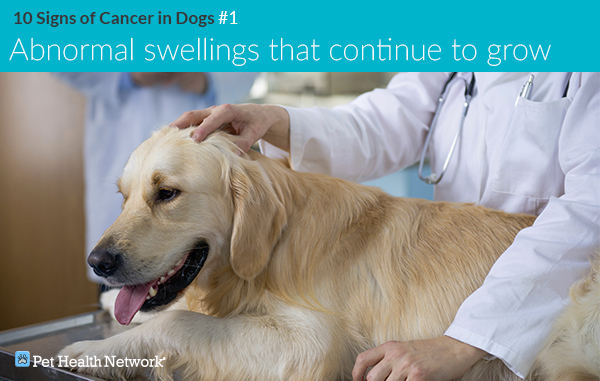
2. Sores that do not heal
These sores are typically skin wounds that don’t seem to heal despite antibiotics by mouth or an ointment applied locally. This also applies to no-healing wounds near a nail.
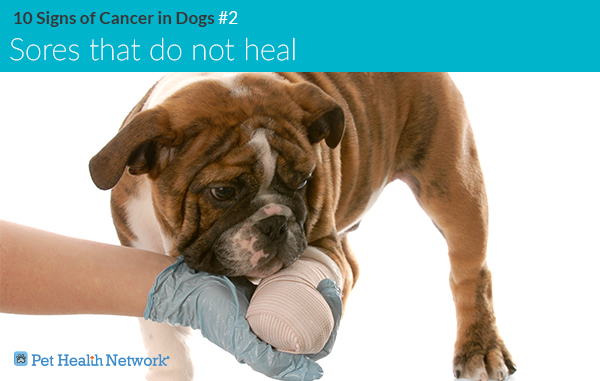
3. Weight loss
This means unexplained weight loss that can't be explained by a weight-loss diet. Common causes could include a tumor along the intestine, as in Missy’s case.
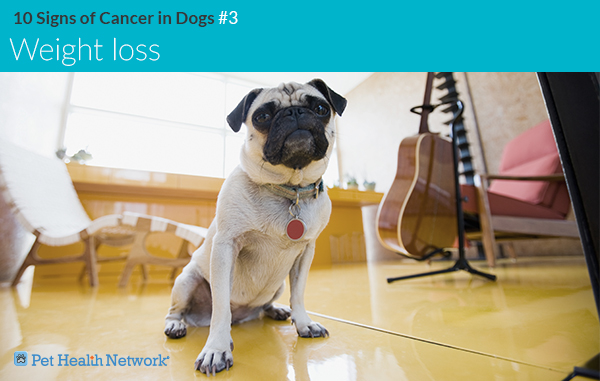
4. Loss of appetite
Similarly, a mass pushing along the intestines may make your dog feel bad. One of the first things a pet will then do, is stop eating.
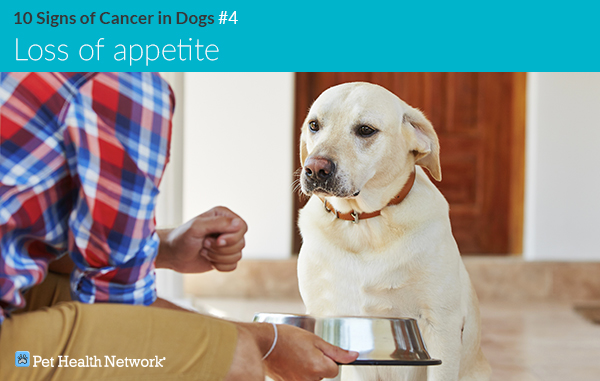
5. Difficulty eating or swallowing
A lump in the neck could be putting pressure on the esophagus (the tube between the mouth and the stomach).
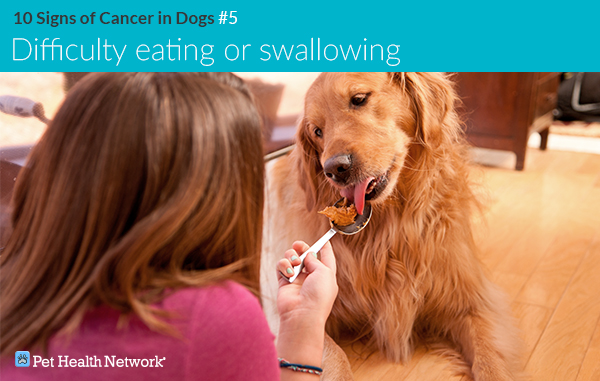
6. Bleeding or discharge from any body opening
Although bleeding from the nose does not necessarily mean cancer, is certainly a common sign of cancer of the nose.
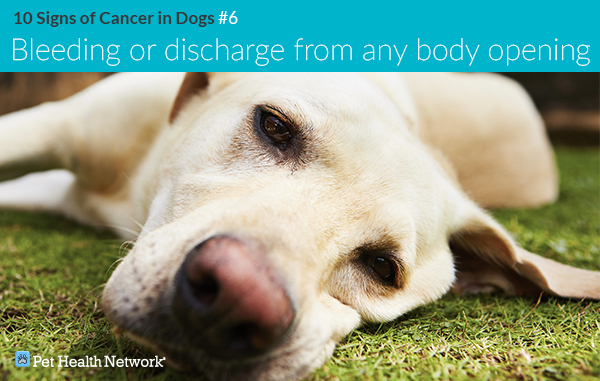
7. Offensive odor
I remember a sweet Bulldog we recently treated. She had a large mass near her anus. Biopsies showed that it was cancer. The odor stemmed from multiple draining tracts from which pus came out. A culture showed that 4 different bacteria were growing in there!
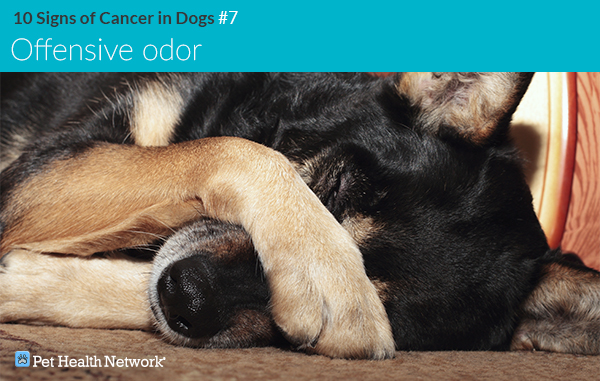
8. Reluctance to exercise or loss of stamina
We recently saw a 9-year-old Rottweiler who had a tumor on the heart. Because of the bleeding and the pressure on the heart, he certainly did have difficulty exercising.
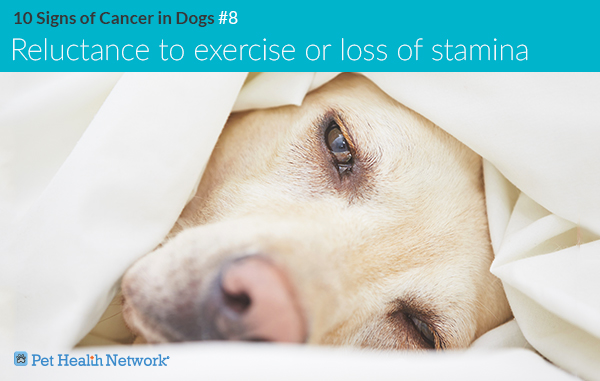
9. Persistent lameness or stiffness
We see lame pets every single day, but luckily they rarely have cancer! However, bone cancer can cause pain and lameness, along with swelling along the leg.

10. Difficulty breathing, urinating or defecating
This could be due to a mass putting pressure on the respiratory system (wind pipe, lung), urinary system (bladder, urethra) or digestive system (rectum, anus).
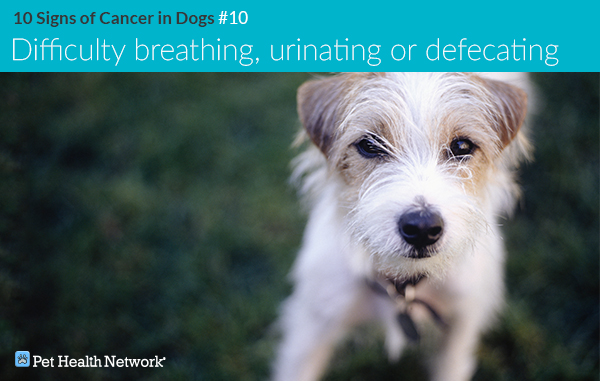
Again, early detection is paramount. While there is no reason to be paranoid, stay informed, keep your eyes open, pet your dog all over and often, and see your family veterinarian regularly for checkups. Whether to detect cancer or any other condition, these are pretty safe recommendations to keep your pet happy and healthy for a long time!
Dr. Phil Zeltzman, DVM , DACVS, CVJ, is a mobile, board-certified surgeon near Allentown, PA. Visit his website at www.DrPhilZeltzman.com.
If you have any questions or concerns, you should always visit or call your veterinarian – they are your best resource to ensure the health and well-being of your pets.
